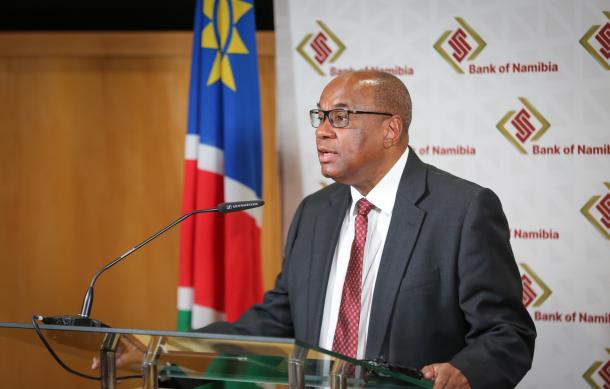
The Bank of Namibia has increased the repo rate by 25 basis points, from 6.5 to 7 percent.
The increase, the bank says is to maintain inflation expectations, protect the peg arrangement with South Africa and meet international financial obligations.
The repo rate is the rate at which the central bank lends money to commercial banks in the event of any short fall of funds.
When the repo rate goes up, the commercial banks and other lenders also increase their interest rates, resulting in clients paying more on their loans, except those with fixed interest rate.
Bank of Namibia Governor Johannes !Gawaxab says this decision was taken after a comprehensive review of global, regional and domestic economic developments.
While domestic economic activity has improved, inflation rates remain elevated, and growth in private sector credit extension remains weak.
!Gawaxab emphasized that risks to the inflationary outlook remain skewed to the upside, partly due to higher price expectations for food and energy.
It was not a unanimous decision, he says with two committee members wanted the repo rate remains unchanged, while three voted in favour an increase with 25 basis points.
The Governor acknowledged that the decision may cause concern to public and end consumers, but he reasoned it was necessary to prevent long-term economic pains.
"We acknowledge that the interest rate we are implementing does not make the bank popular but this are necessary measures, it has many benefits, if we raise the interest rate, slow the economy, prices running out of control, its painful for our people, but if we don't take that action, over the long time, it will be more painful. the pain will be much more deeper.
!Gawaxab reaffirmed the bank's commitment to bringing inflation back to the mid-point of the target band and anchoring inflation expectations to remain unchanged.
He also reiterated the bank's stance to remain cautious and dependent on incoming data, given the increased uncertainty in the economic environment.





